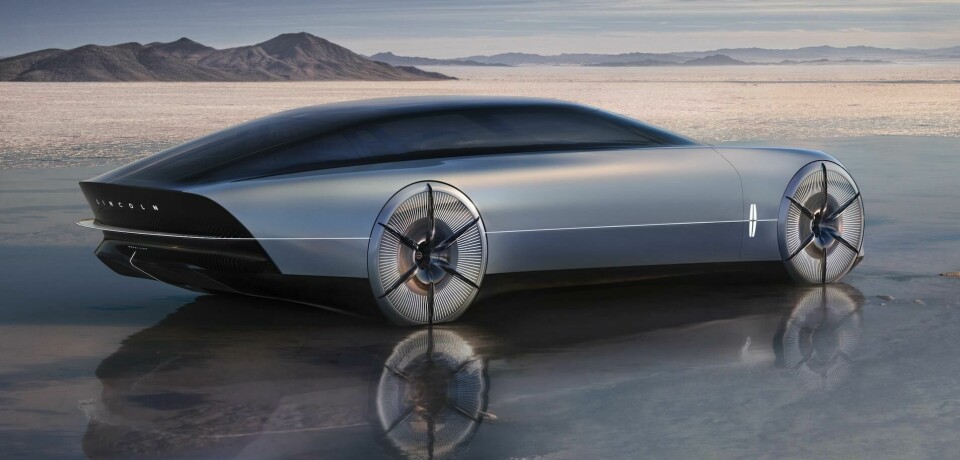
Lincoln debuts L100 concept in Pebble Beach
A nod to the sleek limousines of the 1950s, Lincoln’s massive, luxe show car marks the brand’s centennial with a look into the future. Laura Burstein caught up with the design team to find out more
Before Lincoln’s glitzy Star concept was born, the design studio in Dearborn began planning the L100, a stunning show car meant to revive the prestige of the brand’s glory days, in a fully modern way.
“In the ‘50s we were the quintessential luxury brand, all the glamour and romance. The challenge was how to take this into the digital age,” said Lincoln exterior design manager Xitij Mistry. “We wanted to figure out a proportion that takes your breath away. We are known for the long, low limousines of our heyday. So instead of going up like a Navigator, we said, let’s go low down for efficiency where people are going to expect range but also a certain exuberance.”
At more than six meters long, the L100 is the largest vehicle Lincoln has ever done (for a sense of scale, that’s longer than the long-wheelbase Navigator SUV). The car begins with low, wide proportions optimised for aero, with clean, elegant surfacing. “We took an edited approach to the exterior design that plays up the lighting and the forms,” explains Kemal Curic, global design director at Lincoln. “We wanted this sculpture to have no cut lines. It has a beautiful shoulder and a back end that’s very pure; just one slice. There’s no interruption in the rear, it flows as one piece — like a polished pebble.”
Lighting design includes an illuminated badge that greets drivers in an elegant welcome sequence, as well as a single line of light that runs around the entire car, which follows the owner when paired with a mobile phone. The composite and acrylic wheels are lit with digital “spokes” powered by 3,000 LED lights on each wheel, which allows for customised patterns. “In a future where we have no grilles, it’s all about the badging and all about light,” says Curic.
”Lincoln is a brand of occasion. We want you to arrive in style”
In an impressive feat of engineering, an opening mechanism with reverse coach hinges simultaneously unfurls the doors and the glass canopy roof. “We often talk about the Lincoln Embrace — this warm, enveloping feeling that we want to give the customer,” Curic says. “The doors are a literal expression of that. Think of how you greet your friends or someone close,” he explains, opening his arms wide. “It’s like a big hug.” Mistry adds that the extensive use of glass and the wraparound greenhouse was designed to beckon people inside. “You’re being invited to come in,” he says.
As with the Star, the L100 plays heavily with transparency. Curic and team call the front bonnet a jewelry box, where you can see through to a crystal greyhound statue mounted inside, an homage to the hood ornament used by Edsel Ford in the 1920s.
True to Lincoln’s new tenet of user-experience based design, the interior was created first, with copious amounts of space and reconfigurable seating that will fit up to five passengers. “We really wanted to bring the outside to the inside,” Curic says. “We dropped the IP down to allow the passengers to look ahead; we didn’t want to put a big screen in front of you to watch Netflix. We use our screens in a more story-telling way, not for information.”
Although the L100 is an autonomous car, designers wanted to give passengers the option of taking over when desired. “We had to change the paradigm of controlling the vehicle,” Curic explains. Their solution was a crystal speedform-like controller on the centre console. “One of our designers came up with the idea by watching a little kid playing with a toy car, moving it back and forth” Curic reveals. “It’s the most primitive and intuitive way of interacting with the car.”
While purely a show car, the L100, along with the Star concept, preview design cues that will appear on the next generation of production cars as the company transitions to electrification, with the shift to full EV promised by 2030. “We think this car fulfills our tenets of beauty, human, luxury and gliding,” says Curic. “Lincoln is a brand of occasion. We want you to arrive in style.”



















